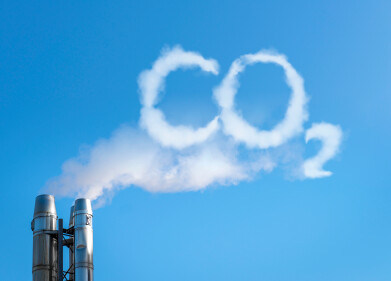Fuel for thought
Two thirds of UK and Norway North Sea oil and gas production has lower than average greenhouse gas intensity, new analysis finds
Dec 07 2022
A new analysis of North Sea oil and gas production by S&P Global Commodity Insights illustrates the degree that greenhouse gas (GHG) intensity can vary from one oil and gas asset to the next, and the factors that ultimately determine it.
The average GHG intensity of production in the UK and Norwegian areas of the North Sea was 12 kilograms of carbon dioxide equivalent per barrel of oil equivalent (kgCO2e/boe) in 2021. A deeper analysis revealed that nearly 2/3 of total production was found to have an intensity below that basin-wide average. Meanwhile, assets responsible for just 20 percent of total production generated half of the basin’s total GHG emissions.
Overall, individual assets across the basin displayed a wide variability, ranging in GHG intensity from less than 1 kgCO2e/boe to nearly 150 kgCO2e/boe. Such a wide range is consistent across all the regions that have been explored to date and highlights the challenges of averages, the report finds.
The findings are derived from a new S&P Global Commodity Insights capability that provides a novel and comprehensive approach to estimating upstream oil and gas production emissions. The new capability, built upon existing proprietary upstream databases and emerging sources such as reported emissions and satellite flaring data from the Earth Observation Group, makes it possible to estimate the totality of an upstream oil and gas play’s emissions and emissions intensity—from across the play, down to individual assets and the sources of emissions, such as the fuels, that underpin each operation.
“In every play where we have looked, we continue to find wide variability in the greenhouse gas intensity with any one asset potentially being significantly different from the average,” said Kevin Birn, Global Head for S&P Global Commodity Insights newly formed Centre of Emissions Excellence. “The new S&P Global Commodity Insights capability delivers a level of granularity that is essential for governments, investors, and frankly the market to truly understand the nature of upstream oil and gas emissions, down to individual assets and the drivers behind each assets emissions, such as fuels that get used.”
The considerable variability of the findings illustrates several key factors that ultimately influence the GHG intensity of an asset. These include productivity, where younger and more productive fields tend to be less GHG intensive than older, more geologically challenging fields. The latter also may require energy-intensive enhanced recovery techniques, increased drilling to maintain productivity, and older technology can also put upward pressure on emissions intensity.
Other factors that impact the GHG intensity of individual assets include the degree to which operations can be electrified and the degree of venting and flaring.
“The scale and complexity of operations across the North Sea—a complex network of offshore platforms, drilling operations, subsea recovery units and pipelines—demonstrate how myriad factors influence the greenhouse gas intensity of any one asset,” Christopher Kennett, associate director, S&P Global Commodity Insights. “The potential for wide variability makes understanding these factors at the asset-to-asset level all the more essential.”
The S&P Global Commodity Insights analysis compared production in the United Kingdom and Norwegian areas of the North Sea to illustrate the influence of these factors.
The analysis found that, on average, UK production in the North Sea was nearly 3 times more GHG intensive (23 kgCO2e/boe) than Norwegian production (8 kgCO2e/boe).
Norwegian operations were advantaged on a GHG intensity basis as, on average, fields tended to be less mature and with a greater share of output from larger, more productive, and technologically advanced operations. Additionally, Norway benefited from electrification projects that tie back to Norway’s relatively low-emission, hydro-dominated power grid.
By comparison, UK North Sea output tended to come from smaller, more mature or more geologically challenging fields, as well as from fields with older infrastructure and technology. These factors resulted in lower productivity and thus higher GHG intensity, the analysis finds. UK operations also had wider use of flaring—flaring and venting accounted for 28% of total UK North Sea emissions compared to 9% for Norway—and, unlike Norway, did not benefit from electrification projects to offset emissions from fuel combustion.
“With the acceleration of global ambition to tackle climate change, there is increasing need by market participants to better understand the GHG competitiveness of oil and gas assets globally,” Birn said. “S&P Global Commodity Insights is supporting this process by shedding new light and understanding on the true nature of upstream GHG emissions at an unprecedented level of granularity.”
Digital Edition
PIN 26.1 Feb/Mar 2025
March 2025
Analytical Instrumentation - Elemental Analysis for Quality and Process Control at Refineries, for Lubricants and Wear Metals in Engine Oils - Synthetic Lubricants: New Developments - Scaling...
View all digital editions
Events
Mar 27 2025 Salzburg, Austria
Mar 31 2025 Hannover, Germany
Mar 31 2025 Beijing, China
Apr 02 2025 Saigon, Vietnam
Apr 02 2025 Atyrau, Kazakhstan



.jpg)







.jpg)







